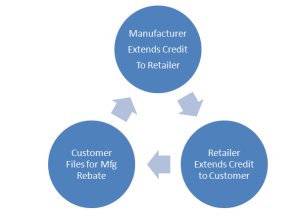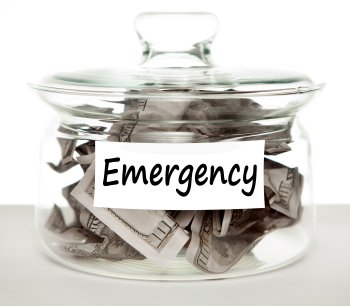When does Borrowing Money Make the Most Sense?
Sooner or later most of us will borrow money at some point in our lives. For many people borrowing money will become a lifestyle. And while intuitively that may not seem to make much financial sense the truth is really more complicated than that.
Debt, especially consumer debt, is a two-edged sword. Accumulation of debt can fuel huge economic growth but only up to a certain point; and then the addition of even more debt or maybe just the failure to pay down the debt leads to economic downturns, what we call recessions and depressions. Of course, a depression is just a very, very bad, deep recession.
100 years ago it was still very uncommon for most people to have much debt. They simply could not qualify for the credit they would have needed to take on debt. The reasons debt was so rare in the 19th and early 20th centuries are diverse, but maybe the strongest reason is the fact that it took so long for companies to share information with each other.
We are not happy with Credit Bureaus today because consumer credit reports are often wrong and misleading. Whether you are the victim of identity theft, bad account administration, or junk debt speculation your credit rating could be substantially lower than it should be without your knowledge. You only find out about how bad your credit is when you apply for credit, such as when you want to buy a car, a home, or maybe just get a credit card.
Still, as bad as the consumer credit reporting system is today, it is virtually the only reason why so many millions of Americans are able to get credit at all. This is because, with a wealth of information about consumers in general to evaluate, the banks are better able to assess their risks in extending credit to people. The banks don’t always get it right, but the consumer credit system still functions well enough to have fueled several decades of massive economic growth in the United States and other countries.
But let’s take a look at some of the principles of smart borrowing, because there are definite pitfalls you want to avoid.
Only Borrow What You Can Repay in Five Years
 On the surface this might seem like bad advice to anyone wanting to buy a home today. After all most home buyers take out 15-year, 20-year, or 30-year mortgages because they cannot pay for their homes within 5 years. But the US Census Bureau tells us that about 12% of Americans move every year. The average home owner may change residences every 5-7 years. So any mortgage you take out today needs to make financial sense for you within a five year period.
On the surface this might seem like bad advice to anyone wanting to buy a home today. After all most home buyers take out 15-year, 20-year, or 30-year mortgages because they cannot pay for their homes within 5 years. But the US Census Bureau tells us that about 12% of Americans move every year. The average home owner may change residences every 5-7 years. So any mortgage you take out today needs to make financial sense for you within a five year period.
You have to ask yourself what the worst-case scenario may be in five years. Maybe the real estate market takes a dip when you have to move and your house will lose about 20% of its “book” value in that fifth year. Of course you may have seen 2-3 years of slowly increasing value in your home over that 5 years, so the 20% drop won’t be as drastic as buying a house and watching it lose 20% value in the first month after you move in.
Where possible you want to be able to walk away from a home mortgage in five years without hurting your credit and maybe with a little more money in your pocket than when you went into that mortgage. The most common way to do this is to buy as much equity in your home up front as possible, and you do that with a down payment or you negotiate a below-market-value price with the home seller.
In other words, you only finance as much home equity as will not hurt you in five years if you have to get out of your house quickly.
When you’re looking at other large purchases such as vehicles, furniture, and undeveloped land it’s best to think in terms of how quickly you can pay off that debt. With furniture you typically want to pay off the loan in 12 months or less. Many furniture retailers even offer 0-percent interest specials if you do just that.
With automobiles, boats, and other vehicles a five-year loan may make more sense but you’re still taking on a lengthy obligation. You may be able to work with the lender to extend the payment cycle when hard times hit but it’s better to only take on as much debt as you can pay on a regular basis while building an emergency fund.
Only Borrow Money That Costs You Nothing
This may sound like a crazy idea but you may be surprised to learn how often you can borrow money “for free”. For example, if you know you’re going to receive a lump some of money in a few weeks (such as an inheritance, a company bonus, a payout of company stock, etc.) then you may find a reason to use a credit card to make an expensive purchase before you get the lump sum. Once the money comes in you can pay down the credit card balance without having to pay interest on the money you spent before it was actually yours.
Take the furniture example I cited above. As I mentioned many retailers do offer 0-percent interest deals, especially on clearance furniture that they need to get rid of. Furniture showrooms depend on high turnover in inventory and every few months they’ll offer extremely good terms on slightly older furniture styles. Rather than pay interest on the latest style, why not get a bargain on last season’s style?
Some stock market investors use credit spreads to borrow money for free by combining contracts (“options”) for the same stocks where they sell high and buy low, pocketing the difference. This is not always possible but some traders devote a lot of time and resources to look for these opportunities.
Only Borrow Money That Costs Less Than Not Borrowing the Money
Suppose you’re already in debt and you’re about to miss a payment; or, worse, you have already missed payments and the penalties are piling up. In order to stop adding more fees to the principle loan amount you already owe it may make more sense to borrow money from a different source and use that loan to catch up or pay off the loan you are struggling with.
Unfortunately, people who are having trouble paying their bills can’t find very good credit terms so the window of opportunity for substituting one cost (usually a one-time borrowing fee, such as on a direct deposit advance or paycheck loan) for a growing cost (the compounding of penalties and interest on a late payment) is usually very brief.
Getting out of the vicious cycle of paying more fees and interest can be very challenging. If you have enough credit to leverage you may be able to transfer your balances around until you can start making good payments again, but each balance transfer usually costs you money. The one-time fee often looks more bearable then allowing fees and interest to compound on a debt that is in arrears, but you may end up paying nearly as much or more in balance transfer fees than if you simply paid down the balance on the original debt.
This is a stalling strategy and it only pays off if you know your income will soon be able to accommodate your obligations.
In some fantasy land you may find that you have an investment which earns you more money than you would pay in interest if you borrow that same amount. Well, this situation has happened a couple of times in recent history. Here is how it worked: consumers bought very expensive Whole Life Insurance policies. These policies locked in their premiums for life (as long as the premium obligations are met). Meanwhile, the policies came with an option to borrow money from an accumulation account at a fixed interest rate. But the interest rate was very high. At the same time, the policies’ accumulation accounts were given a guaranteed interest rate that would be paid no matter what happens in the economy.
Some historic guaranteed interest rates were locked in around 15-18% in the early 1980s. Although these consumers were going through a really bad recession at the time, if they made their premium payments and several years later needed to borrow money, it would have made more sense for them to NOT borrow from their accumulation accounts but rather to borrow from other sources. Why? Because they interest they would pay on those other loans was lower than the interest their insurance companies were paying them on their accumulation accounts.
If you buy a Whole Life Policy today, while interest rates are low, you’ll never be able to leverage the policy’s accumulation account against outside debt that way. The interest rates will work against you. But then you would be able to borrow against your accumulation account at a relatively low interest rate (without having to pass a credit check); and your repayments would go back to your accumulation account, rather than to some bank or financial lender.
Borrowing money from an insurance policy is a better idea than simply cancelling the insurance policy and taking the cash because you’ll never get a low premium again (life insurance premiums increase as you get older — always). You’ll pay interest on your loan but the interest goes back to you, so the cost of borrowing is minimal (the insurance company will often charge you a single transaction fee for processing the loan).
The Worst-Case Scenario: Borrow Money When You Absolutely Have To
Blind borrowing is where you borrow money without really knowing how you will pay it back. A friend or relative is more likely to lend you this kind of money unless you have an investment plan like a 401(k) plan or an insurance policy where you can borrow the money from yourself.
But you may still be able to borrow a few thousand dollars from a bank right before disaster hits. Some people do this because they believe they have a good chance of acquiring the income they need to meet the financial obligation. For example, maybe you were laid off your job but already have a promising interview set up.
This kind of borrowing is dangerous because the more money you borrow the more you risk committing a crime (financial fraud). If you take a last-chance loan from any source you should carefully budget at least six months’ payments so that you honor your commitments.
Some people decide to just default on all their debts rather than go deeper into debt. That may be the better choice because, if nothing else, you’ll have fewer creditors to negotiate with. And if you have friends or relatives who are willing to provide you with a place to stay for a few months you can catch up on your debts while living rent-free and not paying a mortgage.
Rent and mortgage are usually the largest monthly payments most families have to make so any time you can get relief from those expenses in order to pay down your other debts, that’s a good option worth considering. Living with someone else like this is another form of borrowing money (or value) and it’s better for your cash flow and credit worthiness than taking out an emergency loan you may not be able to pay back.
Of course, you would probably be expected to contribute something toward monthly expenses in such a situation but remember that borrowing money (or value) makes sense only when you’re not creating bigger problems for yourself.



